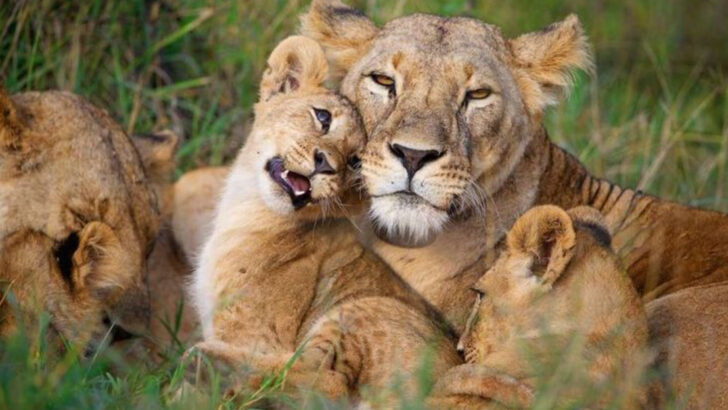You’re not the only one who feels heartbreak, joy, jealousy—or even guilt.
From elephants mourning their dead to octopuses sulking in corners, the animal kingdom is bursting with raw, relatable emotion. And once you see it, you can’t unsee it.
Monkeys throw tantrums. Cows form best friends. Dogs fake injuries for attention (yes, really). These aren’t just instincts—they’re feelings we recognize all too well.
The truth? We’re not as different from them as we like to think.
Get ready to meet 23 creatures with emotional lives that might just out-drama your last breakup.
Elephants
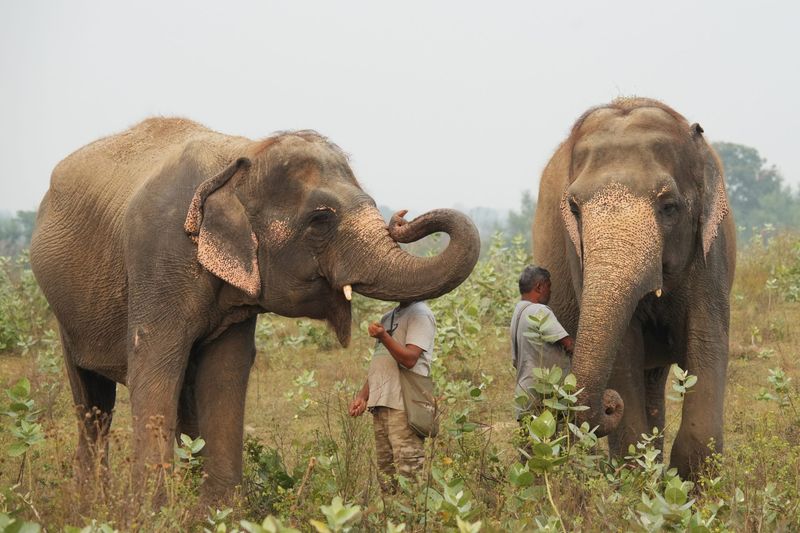
In the vast African savannah, elephants wander with grace and wisdom. Known for their remarkable memory, these gentle giants also exhibit profound emotional depth. Picture the scene: a mother elephant tenderly wrapping her trunk around her calf, a gesture of affection and protection. Such moments reveal their capacity for compassion and empathy.
Elephants are known to mourn their dead, standing vigil for days over a fallen companion. Their emotional intelligence allows them to forge deep social bonds within their herds. These majestic creatures remind us of the universal language of love and loss that transcends species.
Dolphins
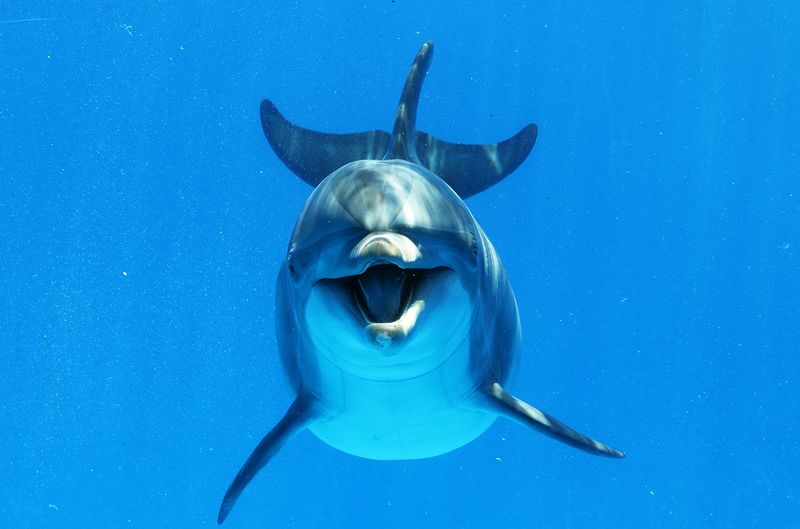
Dolphins, the acrobats of the sea, are celebrated for their intelligence and playfulness. Imagine a pod of these sleek creatures leaping joyfully in the ocean, their whistles and clicks forming a symphony of communication.
Their playful antics are more than just fun; dolphins form tight-knit social groups and have been observed helping injured peers. Their ability to exhibit joy, empathy, and cooperation showcases a complex emotional life. With their vibrant personalities and social dynamics, dolphins invite us to appreciate the power of friendship and community beneath the waves.
Dogs
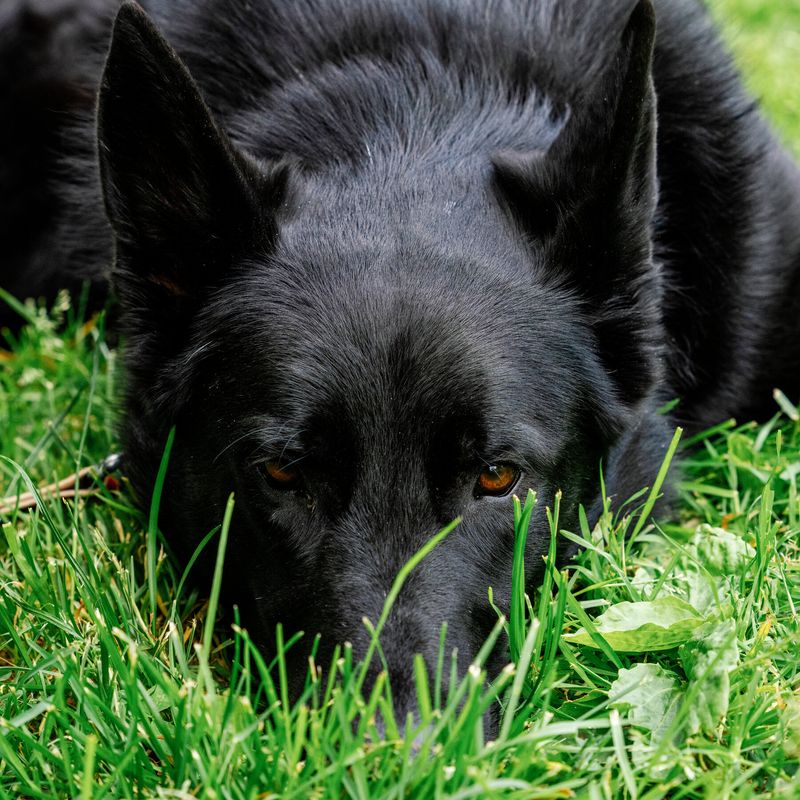
Every dog owner knows the soulful gaze that communicates a world of understanding. Dogs are not just pets; they’re loyal companions with an uncanny ability to sense human emotions. Picture a dog resting its head on its owner’s lap, offering comfort in times of distress.
Dogs display a wide array of emotions, from joy to jealousy. Their loyalty and affection have earned them the title of “man’s best friend.” Whether wagging their tails in excitement or comforting us with their presence, dogs epitomize unconditional love and companionship.
Chimpanzees
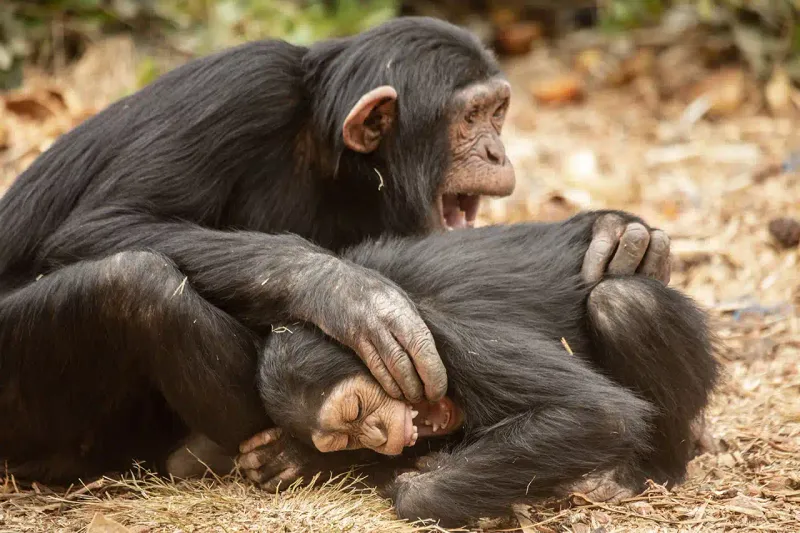
Chimpanzees, our closest genetic relatives, mirror many human emotions with remarkable accuracy. In the lush forest, these fascinating primates engage in play, grooming, and even political maneuvering.
Their emotional complexity is evident as they exhibit behaviors similar to human laughter and grief. Chimpanzees form intricate social structures, displaying empathy, cooperation, and even reconciliation after conflicts. Their emotional lives offer a window into our evolutionary past, highlighting the shared heritage of emotions that connect us across species boundaries.
Cats
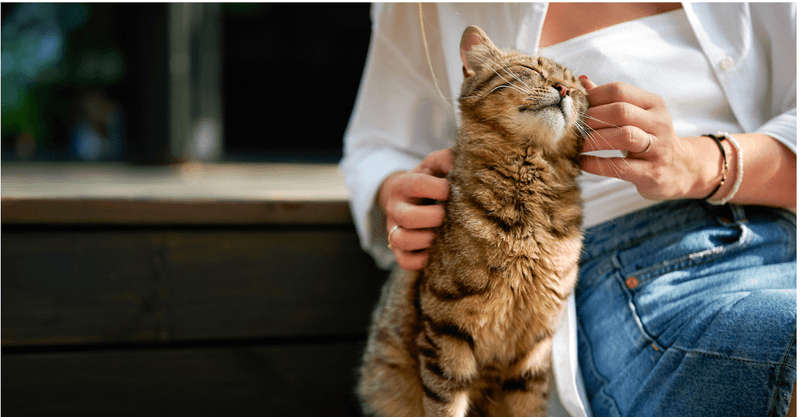
Cats, with their enigmatic charm, have a unique way of expressing emotions. Picture a content cat purring as it curls up on its owner’s lap. This soothing sound signifies trust and affection, a bond built over time.
While often seen as aloof, cats are capable of forming deep attachments. Their subtle gestures, like head butts and kneading, communicate emotional warmth. These furry companions remind us that emotions can be expressed in quiet, understated ways.
Rats
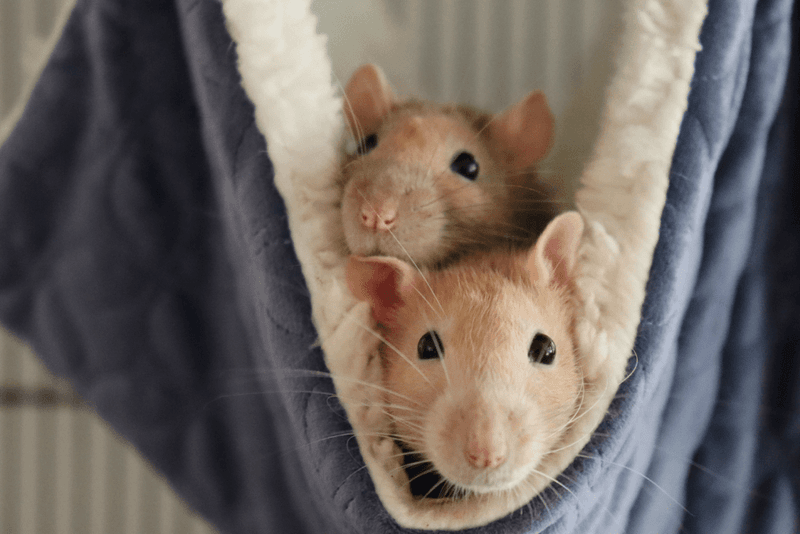
Rats, often misunderstood, are intelligent creatures with a surprising emotional depth. Imagine a curious rat exploring its environment, whiskers twitching with every new discovery.
These social animals form lasting bonds with their companions and even exhibit empathy. Studies have shown rats freeing their trapped peers, displaying a level of compassion that challenges stereotypes. Their playful nature and ability to express joy highlight a rich emotional life, proving that even the smallest creatures can experience profound feelings.
Crows
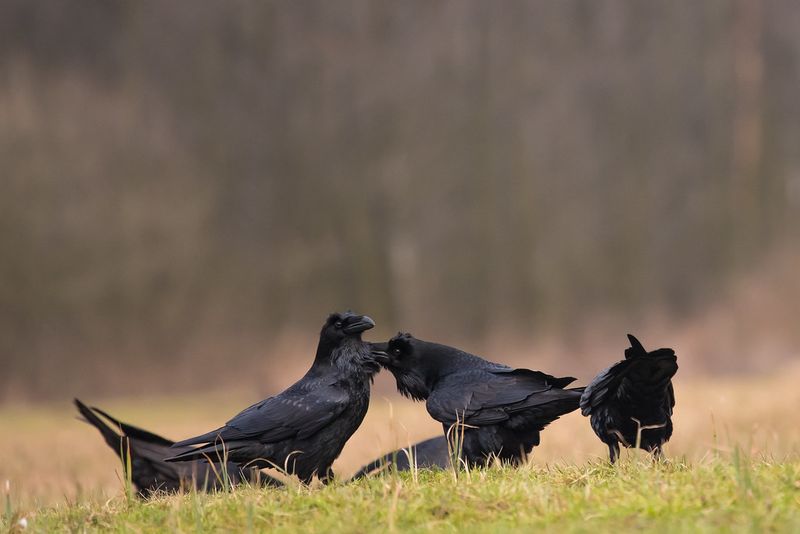
Crows, the enigmatic members of the corvid family, are known for their intelligence and emotional range. Picture a crow perched on a branch, its beady eyes focused on a shiny object.
These birds are capable of complex problem-solving and exhibit behaviors that suggest empathy and cooperation. They form tight-knit family units and can recognize individual human faces. Their emotional intelligence is a testament to the intricate social dynamics of avian life, challenging our perceptions of bird behavior.
Horses
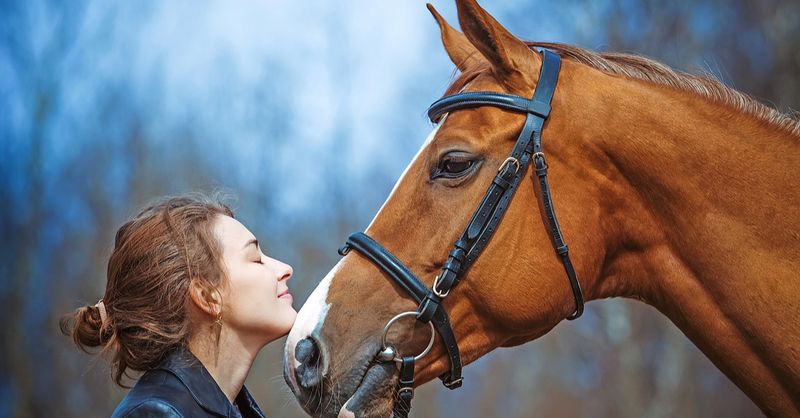
Horses, with their elegant grace, have been companions to humans for centuries. Imagine a majestic horse and rider galloping in harmony across an open field. Such moments of connection speak to the deep bond shared between horse and human.
These noble animals are capable of a wide range of emotions, from fear to affection. They are known to form strong attachments to both humans and fellow horses. Their sensitive nature allows them to respond keenly to the emotions of those around them, making them cherished partners in both work and leisure.
Pigs
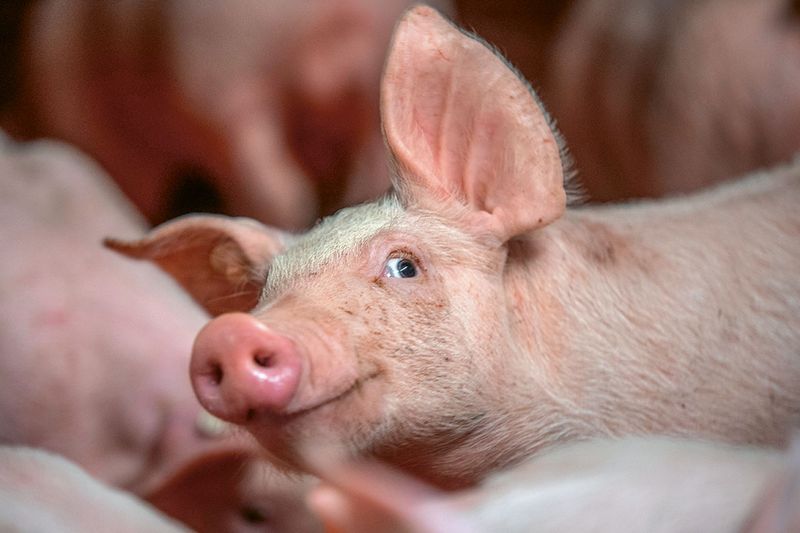
Pigs, often underestimated, possess a remarkable intellect and emotional capacity. Picture a playful piglet rolling joyfully in the mud, its snout covered in a layer of earth.
These social animals form strong bonds with their companions and exhibit behaviors that suggest empathy and cooperation. Pigs have been observed showing affection and even mourning the loss of a friend. Their playful antics and curiosity highlight a rich emotional world, proving that intelligence and emotion can thrive in unexpected places.
Parrots

Parrots, with their vibrant plumage and mimicking skills, are known for their intelligence and emotional depth. Imagine a colorful parrot perched on a branch, mimicking the sounds of its environment.
These birds form strong bonds with humans and fellow parrots, often displaying affection and loyalty. Parrots are capable of understanding complex social dynamics and exhibit behaviors that suggest empathy and cooperation. Their playful nature and ability to communicate make them fascinating companions, showcasing the emotional richness of avian life.
Octopuses
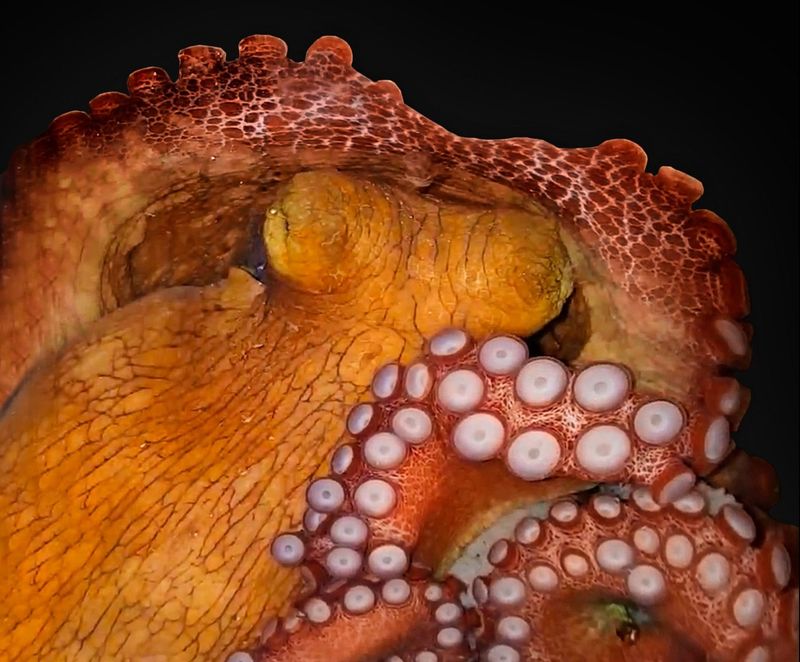
Octopuses, the enigmatic creatures of the deep, are renowned for their intelligence and adaptability. Picture an octopus gliding through a coral reef, its skin pulsing with changing colors.
These cephalopods exhibit behaviors that suggest problem-solving skills and emotional awareness. They are known to form bonds with humans, recognizing individual handlers and displaying playful antics. The ability to change color reflects not only their adaptability but also emotional states. Octopuses invite us to explore the mysteries of underwater life and the emotions hidden within.
Wolves
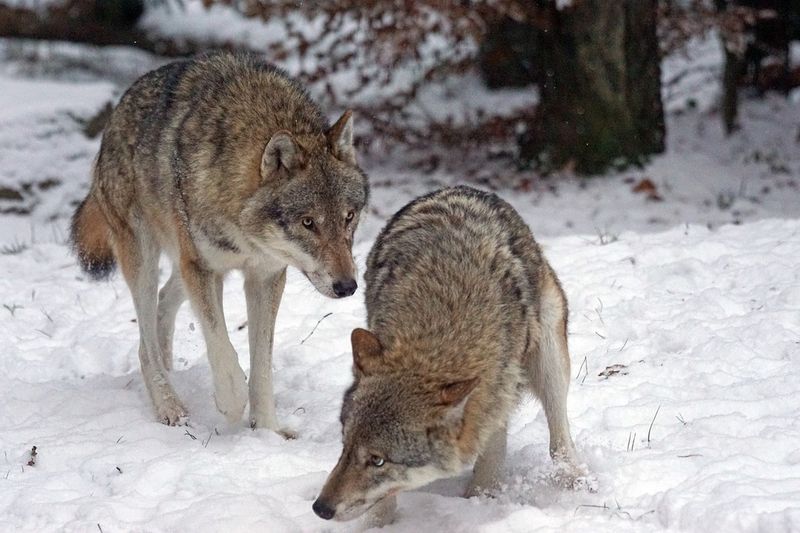
Wolves, the enigmatic predators of the wilderness, are celebrated for their complex social structures. Picture a pack of wolves howling in unison, their voices echoing through a snowy forest.
These animals form tight-knit family units, with strong bonds of loyalty and cooperation. Wolves communicate through a rich tapestry of vocalizations and body language, expressing emotions ranging from affection to aggression. Their social lives offer a glimpse into the primal connections that bind them, highlighting the shared emotions that resonate across species.
Seals
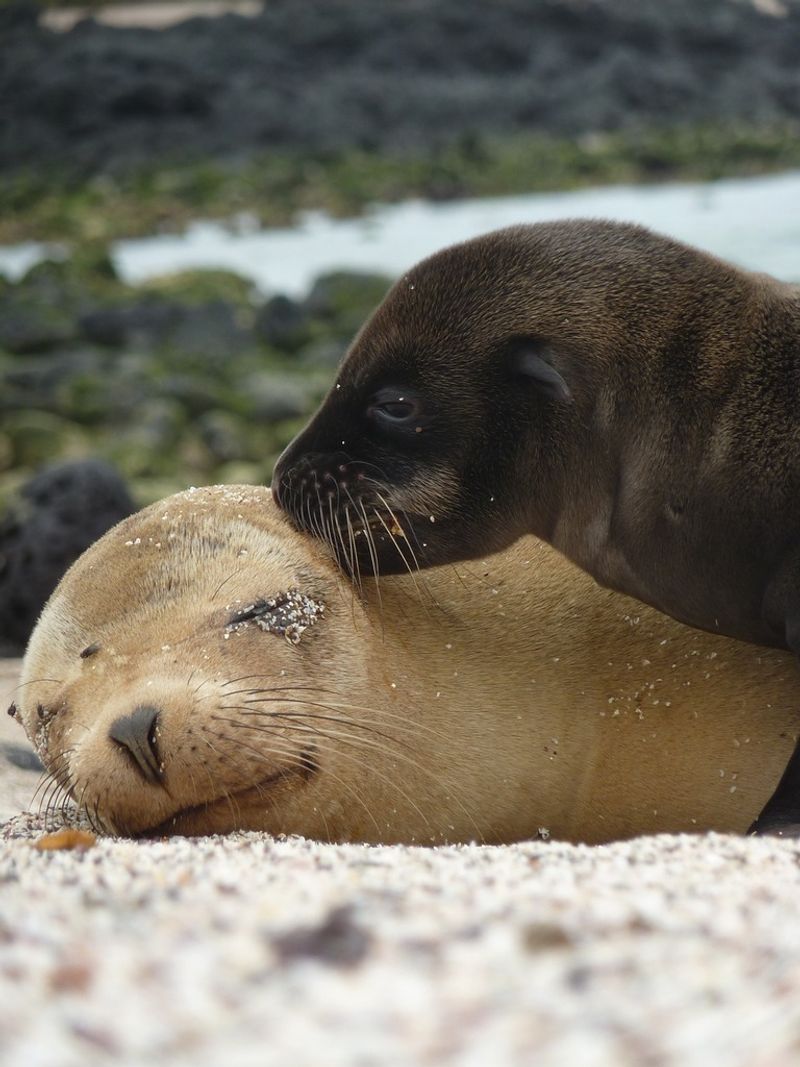
Seals, the playful denizens of the ocean, are known for their curiosity and social nature. Imagine a seal frolicking in the waves, its sleek body twisting and turning with agile grace.
These marine mammals form strong social bonds and display behaviors that suggest emotional depth. Seals communicate through a variety of vocalizations and body language, often engaging in playful antics. Their interactions highlight a rich emotional life, reminding us of the joy and curiosity that thrive beneath the ocean’s surface.
Kangaroos

Kangaroos, the iconic symbols of Australia, are known for their unique social structures and maternal care. Picture a mother kangaroo with a joey nestled safely in her pouch, a testament to her nurturing instincts.
These marsupials form social groups known as mobs, where they engage in playful interactions and mutual grooming. Kangaroos express emotions ranging from affection to aggression, showcasing a complex social life. Their ability to adapt to the harsh environment of the Australian outback reflects resilience and emotional intelligence.
Whales

Whales, the gentle giants of the sea, are celebrated for their intelligence and social bonds. Picture a pod of whales gliding gracefully through the ocean, their songs resonating across the waves.
These marine mammals form strong family units and communicate through a rich tapestry of vocalizations. Whales display behaviors that suggest empathy and cooperation, often working together to care for young and protect one another. Their emotional depth and social complexity invite us to explore the mysteries of ocean life and the connections that bind us all.
Orangutans
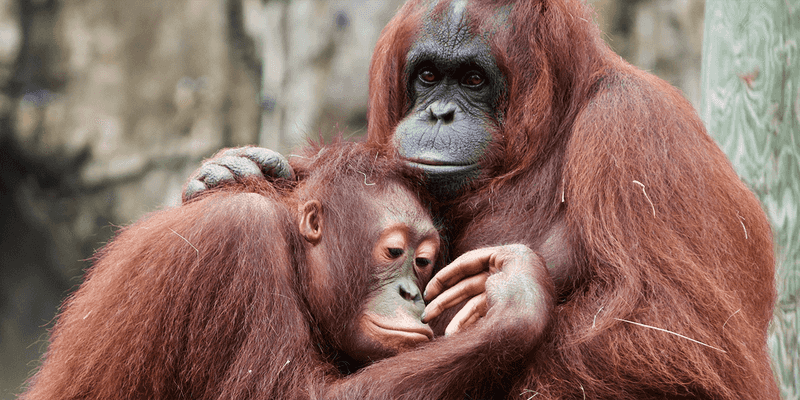
Orangutans, the wise sages of the rainforest, are known for their intelligence and gentle demeanor. Imagine an orangutan swinging gracefully through the trees, its eyes reflecting a world of understanding.
These primates form deep bonds with their offspring, nurturing them with care and patience. Orangutans exhibit behaviors that suggest empathy and problem-solving skills, often using tools to navigate their environment. Their emotional lives offer a glimpse into the complexity of primate behavior, reminding us of the shared heritage that connects us.
Penguins
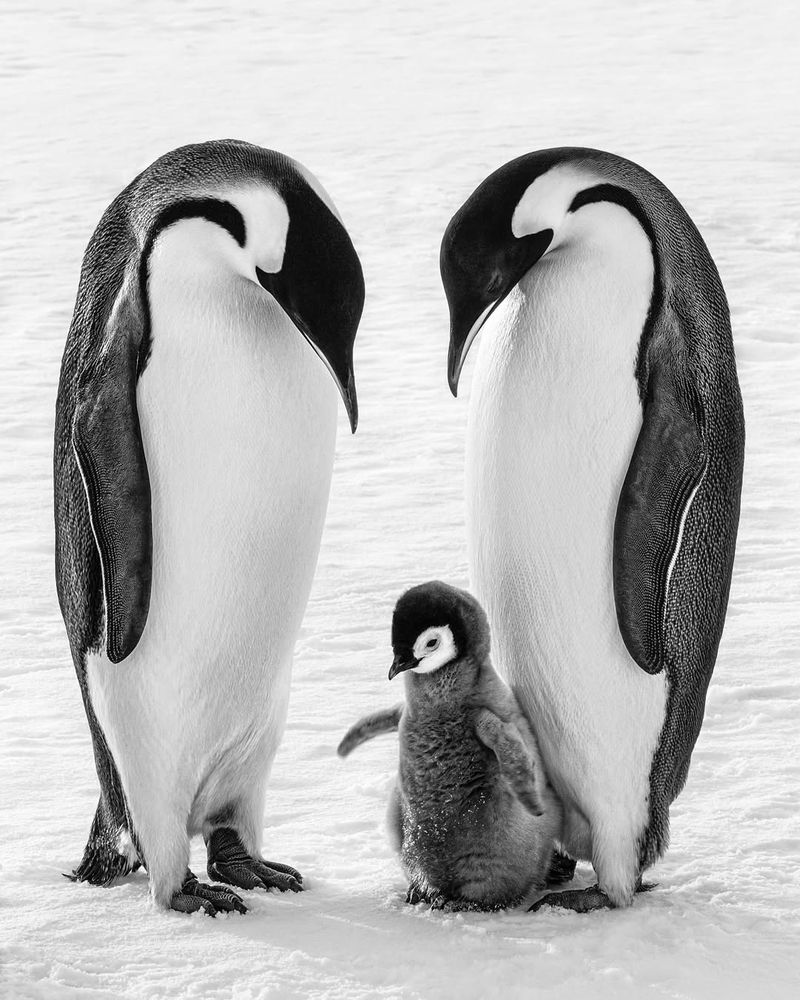
Penguins, the charming residents of the Antarctic, are celebrated for their strong social bonds. Picture a group of penguins huddling together for warmth, their feathers glistening with frost.
These flightless birds form monogamous pairs and work together to raise their young. Penguins display behaviors that suggest cooperation and empathy, often taking turns caring for their chicks. Their interactions highlight the resilience and emotional depth that thrive in the harshest of environments, offering a glimpse into the communal life of the frozen south.
Cows
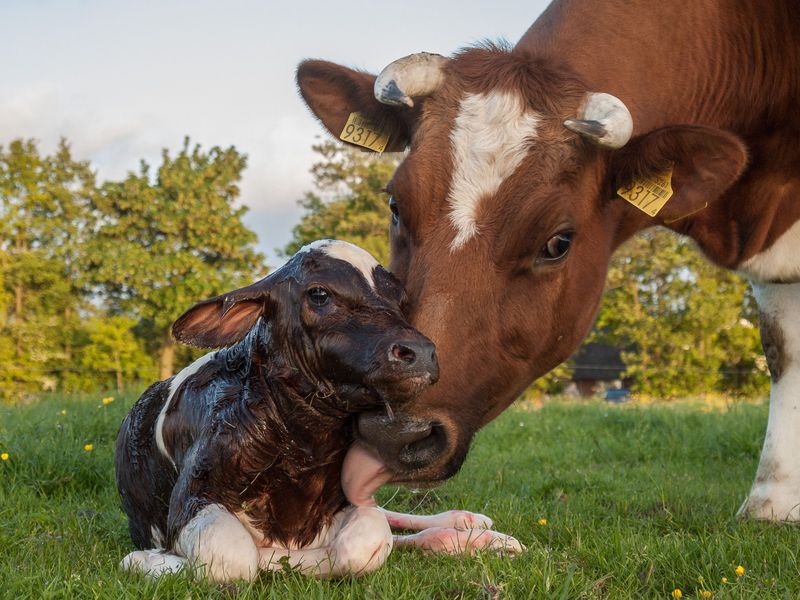
Cows, often seen as mere livestock, possess a surprising emotional complexity. Imagine a herd of cows grazing peacefully in a lush meadow, their gentle eyes reflecting tranquility.
These social animals form strong bonds with their herd mates and display behaviors that suggest empathy and cooperation. Cows have been observed mourning the loss of a companion, showcasing a depth of feeling often overlooked. Their serene presence and emotional connections remind us of the hidden complexities within the animal kingdom.
Bats
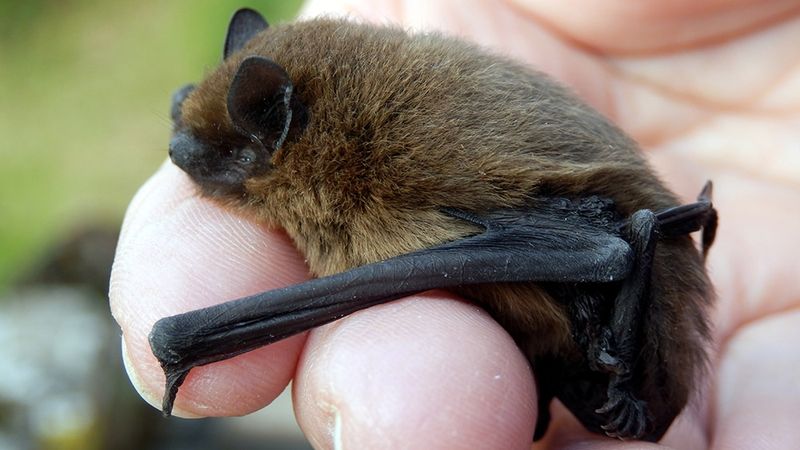
Bats, the mysterious denizens of the night, are known for their complex social structures. Picture a colony of bats hanging upside down in a dark cave, their wings wrapped tightly around them.
These nocturnal creatures form intricate social groups and communicate through a series of high-pitched calls. Bats display behaviors that suggest cooperation and empathy, often working together to find food and care for their young. Their social dynamics highlight a rich emotional life, challenging our perceptions of these fascinating mammals.
Giraffes
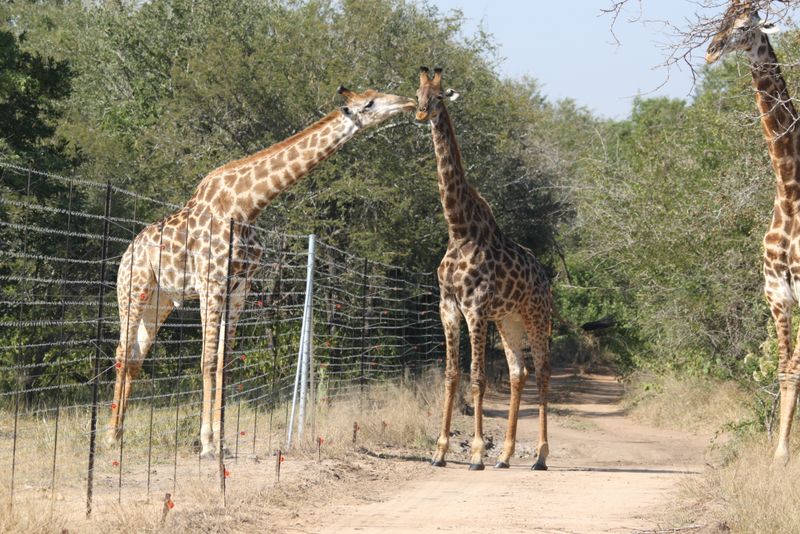
Giraffes, the towering sentinels of the African savannah, are known for their serene demeanor and social behavior. Imagine a group of giraffes gracefully strolling across the open plains, their long necks swaying gently.
These majestic animals form loose social groups and exhibit behaviors that suggest cooperation and empathy. Giraffes communicate through subtle gestures and low-frequency sounds, expressing emotions ranging from curiosity to affection. Their unique presence and emotional connections offer a glimpse into the hidden world of the savannah.
Squirrels
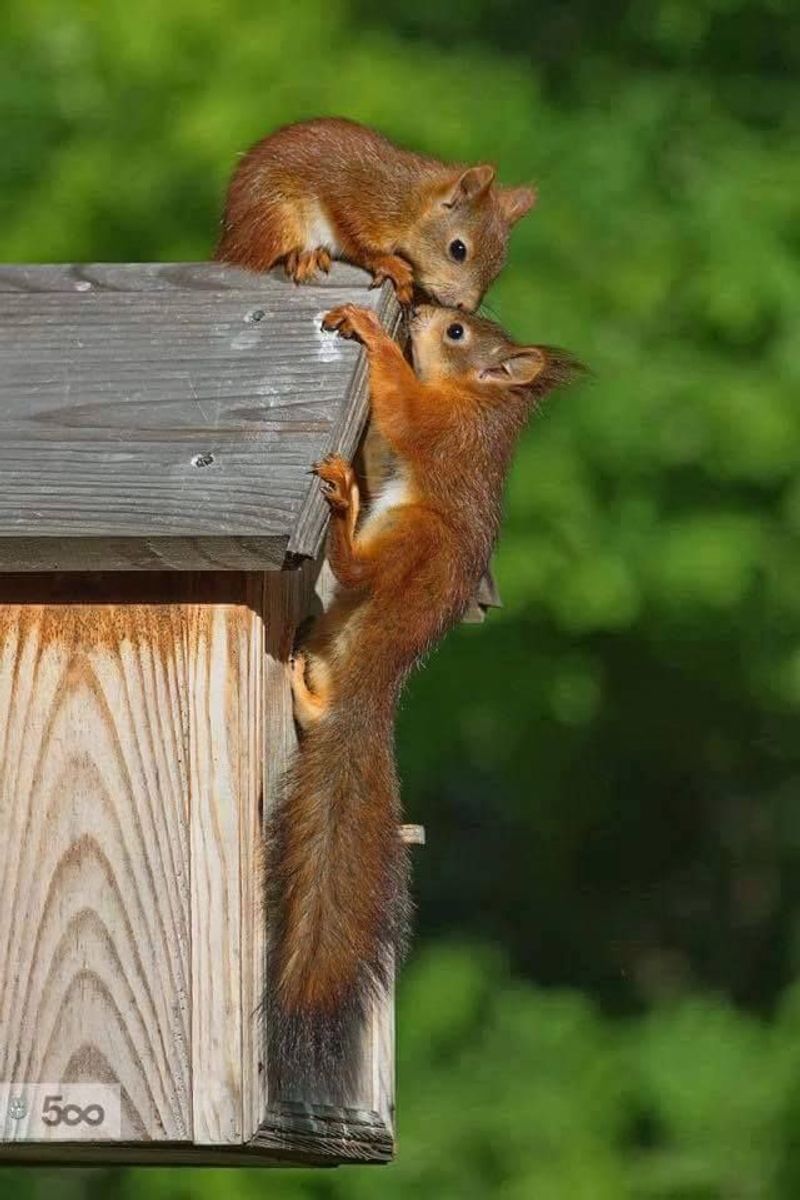
Squirrels, the energetic acrobats of the forest, are known for their playful nature and curiosity. Picture a squirrel leaping from branch to branch, its bushy tail flicking with excitement.
These resourceful creatures form social groups and display behaviors that suggest cooperation and empathy. Squirrels engage in complex problem-solving and exhibit a wide range of emotions, from joy to anxiety. Their lively antics and emotional intelligence remind us of the vibrant life that thrives in the treetops.
Beavers
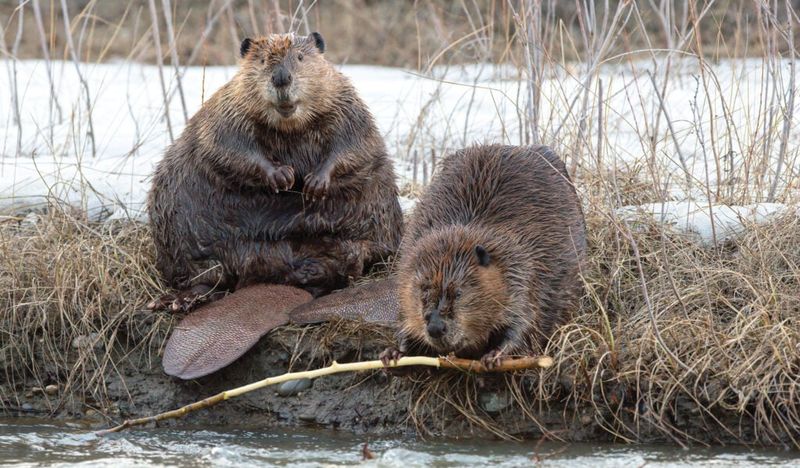
Beavers, the master builders of the animal kingdom, are celebrated for their engineering prowess and social bonds. Imagine a family of beavers tirelessly constructing a dam, their teamwork evident in every movement.
These industrious rodents form strong family units and display behaviors that suggest cooperation and empathy. Beavers work together to maintain and protect their homes, showcasing a level of emotional intelligence that supports their complex social structures. Their ability to transform landscapes reflects the power of community and shared purpose.
Lions
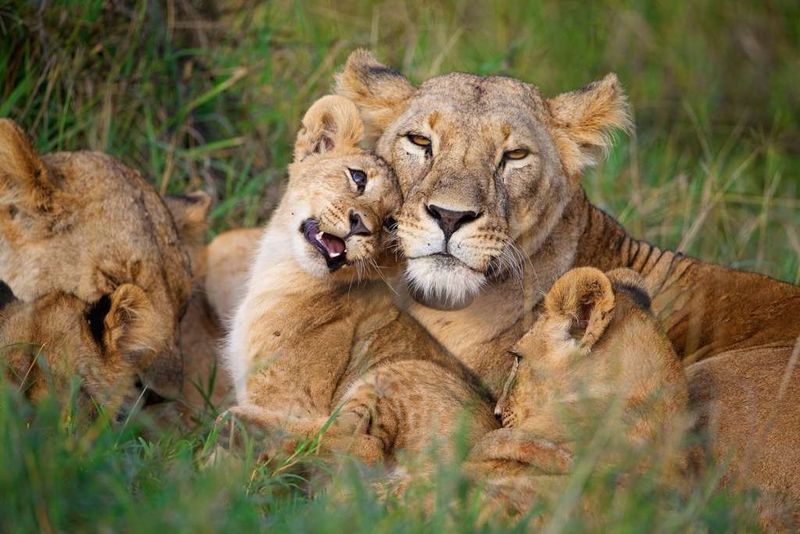
Lions, the regal rulers of the African savannah, are known for their strong social bonds and leadership. Picture a pride of lions lounging beneath the shade of a tree, their golden eyes observing the world with quiet authority.
These majestic animals form complex social structures, with strong bonds of cooperation and loyalty. Lions communicate through a series of vocalizations and body language, expressing emotions ranging from affection to aggression. Their social lives offer a glimpse into the primal connections that bind them, highlighting the shared emotions that resonate across species.

